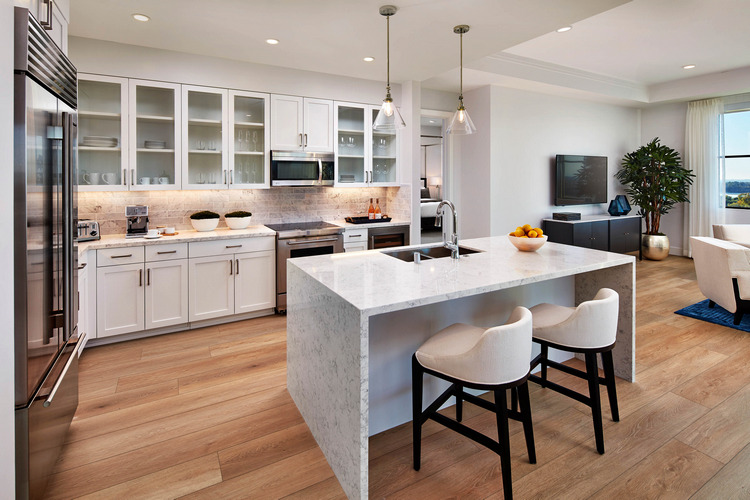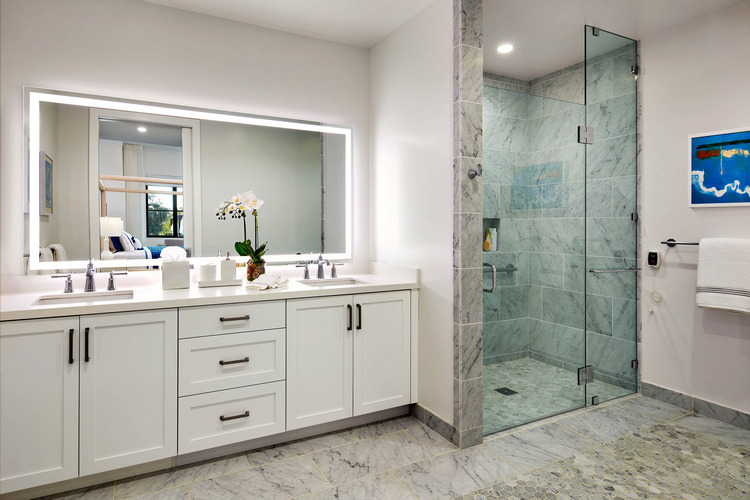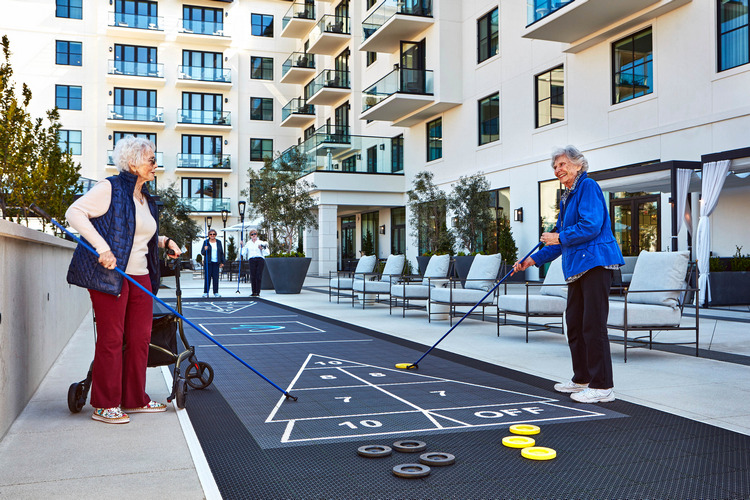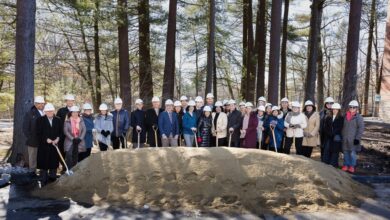Home. There’s no place like it. It’s where the heart is — where our most cherished memories and moments reside.
Changing one’s residence is ranked among life’s most stressful events. According to an AARP survey, nearly 80% of Americans want to stay in their homes or communities as they age. For older people, concerns about losing their independence can intensify the emotional impact and disruption caused by relocating.
Moving through the senior living care continuum — from independent living, to assisted living, to skilled nursing or rehab — can be challenging. To support people’s desire to age in place, the latest designs for senior living communities provide the comforts of home in an environment that meets changing needs.
Healthy, adaptive, accessible design
“Designs to support aging in place are a new option in the senior living marketplace,” said Siobhan Farvardin, global practice leader, Senior Living, for global design firm HKS. “This is another choice for senior living community operators and residents.”

Vivante Newport Center, a luxury community that serves Newport Beach, California-area seniors and their families, is a prime example of the aging in place model of care.
The community, designed by HKS, is in a lively mixed-use development with upscale retail, hospitality and office space components. The project team is pursuing LEED Silver certification for the building’s sustainable design, which features air and water filtration systems to help provide a healthy environment.
Vivante Newport Center has 90 spacious residences that have generous ceiling heights; expansive windows with views, balconies or patios; and full kitchens with high-end appliances, such as Wolf ranges and cooktops and Sub-Zero refrigerators. Every unit is adaptable, to facilitate aging in place. The bathrooms are sized to meet the requirements of the Americans with Disabilities Act and the shower doors are removable, for increased accessibility. The building’s concrete frame structure allows the entire community to meet fire and life safety building standards for both ambulatory and non-ambulatory residents.

Local building codes strictly limit the number of non-ambulatory residents above the second floor of a wood-frame building. Cory Alder, president of Santa Ana, California-based Nexus Companies, the real estate developer of Vivante Newport Center, said that residents’ potential needs and the building codes both inspired the structural design.
“If someone needed a cane six months after they moved in — or a walker, or a wheelchair — they may have to move for licensing reasons. How do you explain that to a resident or their family?” Alder asked. “What if you don’t have a unit available on the right floor and they have to move out of the community? We built a concrete structure with adaptable units because we weren’t going to subject our residents to that.”
All-in-one, supportive environment
Vivante Newport Center includes dedicated medical office space, a physical and occupational therapy clinic and in-building access to primary care, to support the community’s partnership with Hoag health system. Through this partnership, the community provides overall healthcare coordination and access to all Hoag health system services, including support from the Neurosciences institute. Rather than having to move to a skilled nursing facility for rehab treatment after a hospital stay, “(residents) can come back home and get their physical therapy or occupational therapy here,” Alder said.
In addition, a specialty memory care unit called The Shores, is designed for people experiencing cognitive impairments. Residents who need memory care can continue to live at Vivante Newport Center in one of the 27 memory support suites at The Shores. They do not need to move out of the complex as they move through the care continuum.
Maintaining family, social connections
A report by the National Academies of Sciences, Engineering and Medicine identified social isolation as a health risk for older adults. Social interaction is key to healthy aging in place. As such, the community’s subterranean “family fun level” includes a two-lane bowling alley and an arcade with games selected to interest all ages. In addition, this level has a luxury spa/salon that offers massage and skincare services, an indoor pool, art studio, movie theater and fitness/yoga room.

“Socialization is a huge part of growing older and making those last years meaningful,” Alder said, describing how residents have formed bowling leagues, held dances and reignited their social lives.
The community’s outdoor pizza oven and shuffleboard court are fun for residents and make visits something the whole family can look forward to. Amenities like these “get people outside and engaged,” said Farvardin. “The grandchildren love them, and the adult children love them, too.”
The design of Vivante Newport Center has proven so successful that Nexus and HKS are utilizing many of the same design strategies to create Vivante at Turtle Creek, a senior living community scheduled to begin construction soon in Dallas, Texas. The grand opening of Vivante at Turtle Creek is planned for 2027.
The 20-story luxury Turtle Creek tower will feature upscale, condo-like residences licensed for assisted living, along with an integrated memory care unit and onsite medical office space to support a partnership with a local health system. The building will have two stories of underground parking and nearby shopping, entertainment and healthcare. It will include bowling lanes, an art studio, theater/event space, indoor pool, golf simulator, fitness and yoga room and salon.
Vivante at Turtle Creek is being built on the former site of a one-story office building designed in 1959 by Harwood K. Smith, founder of HKS. To honor this legacy, the sophisticated new tower will incorporate midcentury modern design elements that reference Smith’s original building.
These two projects are setting a new standard for aging-in-place and supportive environments to accommodate a growing population of seniors. “Design is crucial to aging in place,” said Farvardin. “Environments that are safe, adaptable and bring people together help seniors live full, dignified lives. As designers, we want to help people live comfortably and independently for as long as possible.”
Editor’s Note: This article has been adapted with permission and originally appeared here.
Amy Eagle is a writer at HKS.


